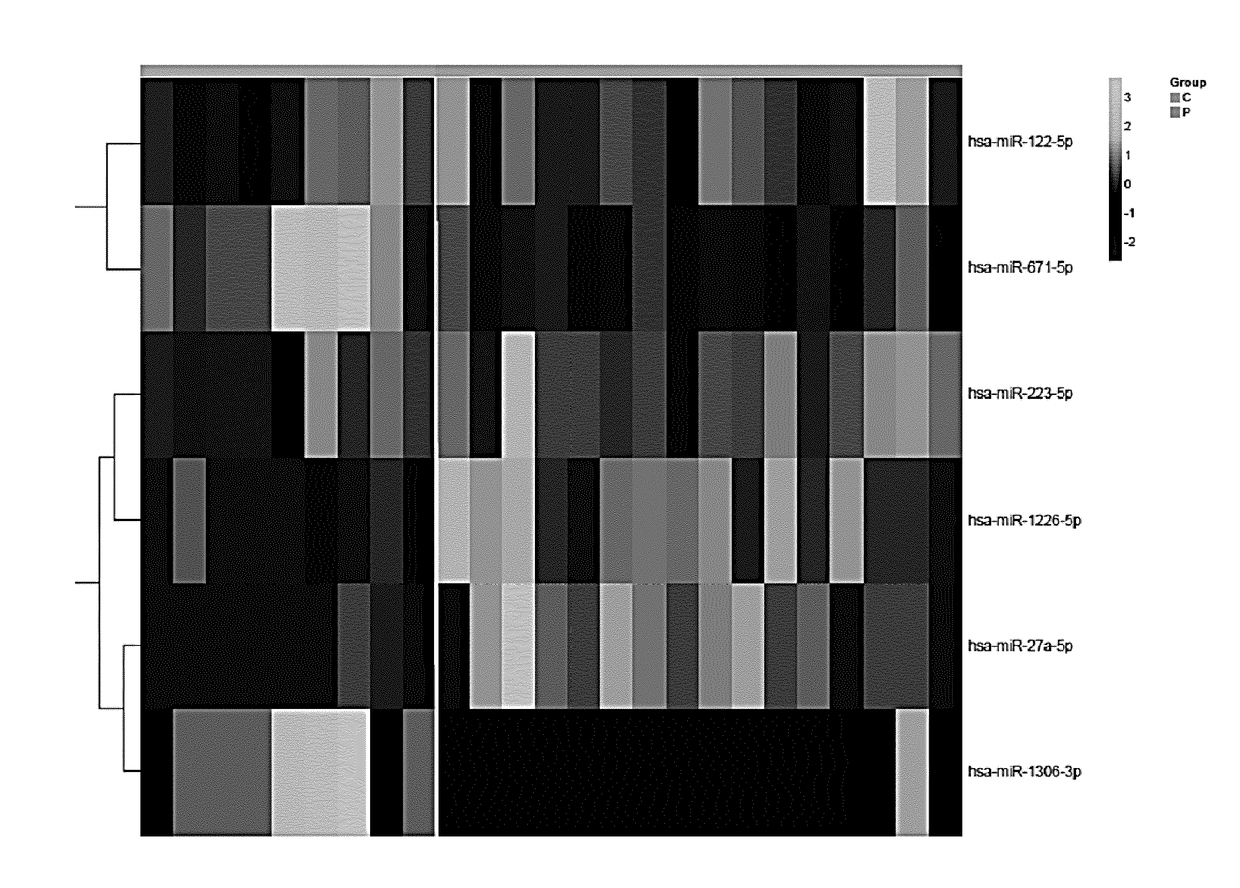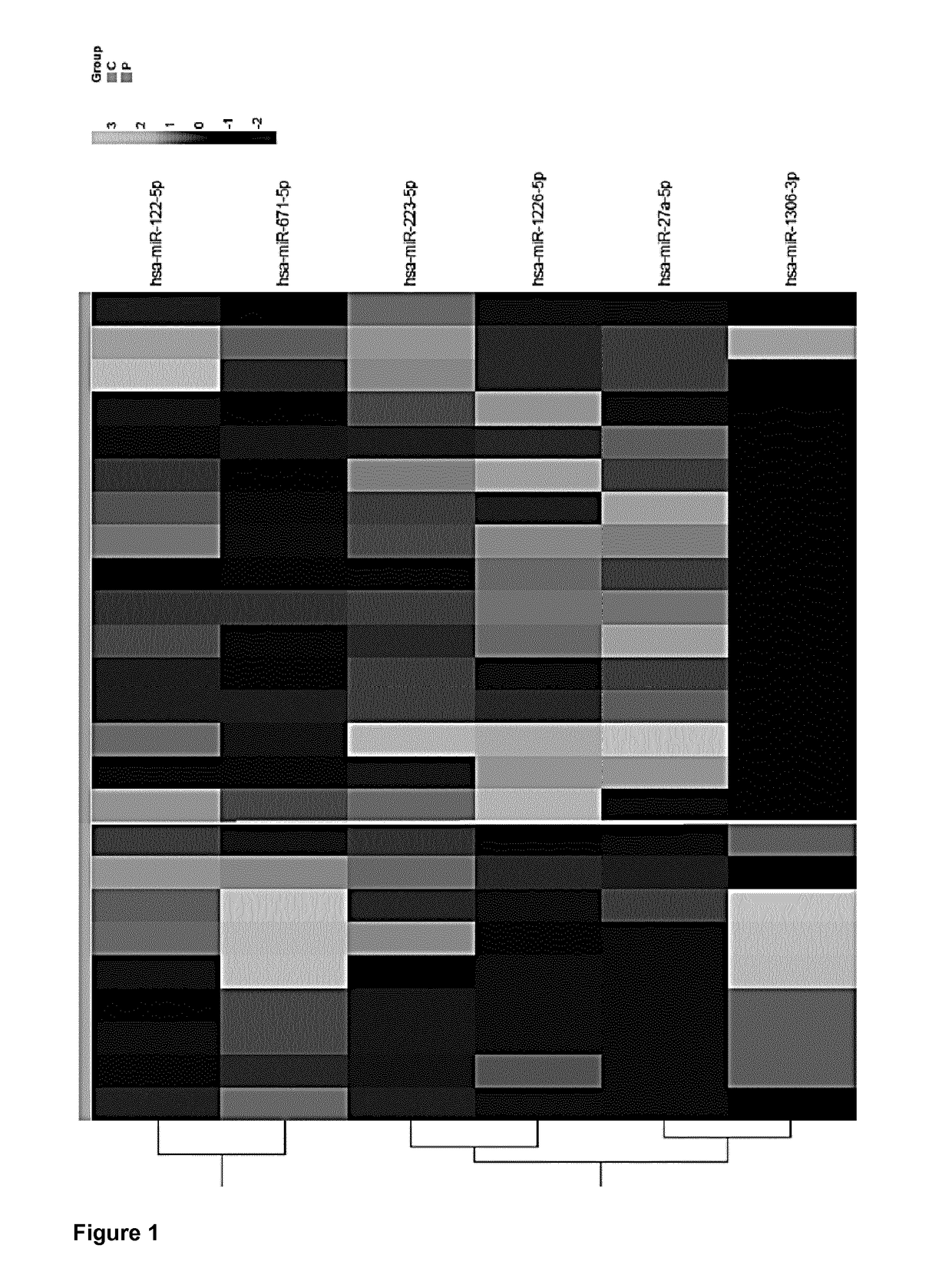Kit and method for the diagnosis/prognosis of idiopathic scoliosis
- Summary
- Abstract
- Description
- Claims
- Application Information
AI Technical Summary
Benefits of technology
Problems solved by technology
Method used
Image
Examples
example 1
and Methods
[0134]Study Design and Population
[0135]This study is a prospective study based on an experimental analysis of the epigenetic profile of AIS. Patients between 12-18 years old, diagnosed for AIS with a Cobb angle >15° and marked scoliosis, low back pain and no neurologic symptoms.
[0136]The inclusion criteria for the patients group were diagnosed for AIS with a Cobb angle >15° and marked scoliosis, minimum follow up for two years, no previous surgical treatment, radiographies available, age between 12-18 years old.
[0137]Exclusion criteria were: smoker, active infectious or inflammatory process during extraction, antioxidants intake, neurologic pathology, congenital syndrome pathology, and patients with scoliosis due to secondary causes.
[0138]In this study, subjects affected by AIS and healthy subjects were enrolled in the study after ethical committee approval and informed consent signature. Informed consent to create a public sample repository of AIS in the CIBERER Biobank ...
example 2
[0161]Clinical Description of AIS Patients
[0162]A total of 30 patients and 13 healthy subjects were included in the present research study. In the patients group the mean age was 15.02 year-old (range 12-18). The men-women ratio was 5:1, respectively. IMC mean value on this group was 19.84±3.03. Familiar history was positive on 13 patients, which represent 43.33% of the total group. Mean age at diagnosis was 10.65 year-old (range 8-18). As mentioned previously, the minimum follow up was two years. Mean age at menarche was 12.26 year-old (range 10-15). At the moment of the blood test 2 feminine patients did not yet have the menarche.
[0163]From the clinical perspective, the mean TRACE punctuation was 6.6 (range 4-10). The mean coronal plumb test value was 1.18 cm (range 0-2.25). Using a scoliometer, on Adams Test, the mean prominence measured was 6.76° for thoracic trunk and 4.41° for the lumbar segment. Neurologic exploration was normal in all patients.
[0164]Attending on radiologic r...
example 3
btained from Small RNA Sequencing Data
[0181]1. Processing, Aligning and Quantification of the Readings.
[0182]There were performed initial quality control checks to know whether the data required filtering to remove ribosomal RNA (rRNA) contamination, if sequence reads required ‘trimming’ to remove low quality bases and if there was a need to trim reads to remove sequencing adapters. Based on the results obtained, the sequence reads were trimmed to remove sequencing adapters and low quality bases from the 3′ end with a Phred-quality threshold less than 20. Finally, the reads with a length less than 18 nucleotides were discarded. A new FastQC run was performed to ensure that the previous quality trimming and / or adapter removal steps successfully conserved high quality reads without being too stringent and without introducing any newly apparent technical biases.
[0183]The software used to perform quality control check and the adapters removing / reads filtering were FastQC (http: / / wvvw.bi...
PUM
| Property | Measurement | Unit |
|---|---|---|
| Angle | aaaaa | aaaaa |
| Level | aaaaa | aaaaa |
Abstract
Description
Claims
Application Information
 Login to View More
Login to View More - R&D
- Intellectual Property
- Life Sciences
- Materials
- Tech Scout
- Unparalleled Data Quality
- Higher Quality Content
- 60% Fewer Hallucinations
Browse by: Latest US Patents, China's latest patents, Technical Efficacy Thesaurus, Application Domain, Technology Topic, Popular Technical Reports.
© 2025 PatSnap. All rights reserved.Legal|Privacy policy|Modern Slavery Act Transparency Statement|Sitemap|About US| Contact US: help@patsnap.com



